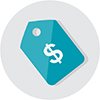
“All this clutter! All this unused stuff! I’ve had it!” Sound familiar? Last we checked, somewhere between 99 and 100 percent of American adults threaten to have a garage sale at some point in their lives. Ahh, but so few actually do it! Which is too bad, because having a garage sale can be loads of fun, deeply satisfying, and surprisingly profitable. Particularly if you follow our expert secrets.
If you’ve been to a tag sale where the sellers just plopped things out to sell without any preparation, you’ve undoubtedly been repelled by grimy appliances, dirty toys, and greasy glasses. Use the same standards for your sale items that you’d want a store to employ.
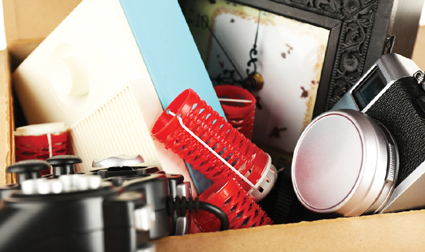
As you pull things out for sale, check them to see if they need cleaning or minor repairs. It is easier to do this as you collect things, rather than tackling it all just before the sale. Polishing metals, cleaning glass, removing stains, ironing linens—all will result in higher sales.
Hang ’em high. Clothing should be mended, cleaned, and ironed, and especially should be free of odors. Hang clothing properly, with buttons or zippers fastened, collars neat, and shoulders square on the hangers. Sweaters or items that might “hang” out of shape should be folded neatly and displayed on a table. Clearly mark the size of each piece, and hang or display according to size, gender, and age.
Run a load. Run plastic baby or toddler toys through the dishwasher. No one wants to buy a sticky, dirty toy for their child. Ditto for all dishes, glassware, tools, utensils, pots and pans, and storage pieces. Carefully wipe down and shine all gadgets and kitchen electronics.
Clean off the outdoors. Hose off outdoor furniture, garden tools, pots, and so on. If the cushions on your patio furniture are faded, at least be sure they are clean.
Don’t wait until the day before the sale to price things—this will add to your stress, and you’re more likely to over- or underprice something if you are doing a lot in a hurry. As you gather and clean things, think about the price.
Make it clear. Either purchase colored adhesive dots or use masking tape; the first is faster but more costly. If you’re using the colored dots, you can either write the price on each dot or come up with a price for each color, and hang posters around your sale explaining the system. Use a permanent marker for writing prices—it’s easier to read.
Tag it! Every single item, no matter how small, needs a price tag. If you have a lot of similar small items you plan to price equally, you can group them in a bowl, box, or basket. Be sure to post a small sign giving the price.
Sell the set. Price sets of things, such as drinking glasses, flatware, or dishes, so that it’s to the customer’s advantage to buy the set (Glasses: 50 cents each or six for $2). Group things that relate to each other, such as a bread maker with serving baskets and a butter dish, and sell them as a set—the perceived value is higher, so you can charge a bit more.
Price them right. So how much should you ask for things? The standard rate is anything from 10 percent to 50 percent of what the item would cost new. It all depends on the condition of the piece and how much it is in demand. Since you want to sell your stuff, be careful not to overprice it, but also don’t give it away, especially at the beginning of a sale. You can always lower the price toward the end of the sale day. But raising a price mid-sale is a definite no-no.
Deal or no deal. Decide ahead of time if you’re willing to haggle. Generally, folks that frequent tag sales are ready to bargain, so you should try to be flexible. As you sort your items, make notes about things you’re willing to reduce and things you are not willing to reduce. A well-placed sign at your sale saying “Make Me an Offer” may help you move your things faster.
A few items traditionally seem to be in demand at tag sales. Here are some examples:
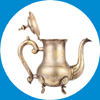
ANTIQUES. Check prices online or visit antique stores. Clean antiques cautiously—the patina of age can raise an object’s value; overcleaning can devalue it.
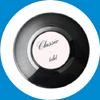
COLLECTIBLES. Again, research to maximize your selling potential. (One easy method is to see what prices your items fetch on eBay.com.) Baseball cards, old toys or boxed games, coins, old vinyl records or album covers, comic books, out-of-print books, tools, and dolls can all be worth more than you think.

CHILDREN’S STUFF. Fashion dolls and baby dolls, doll clothes and furniture, stuffed animals, horse statues, children’s furniture, tea sets, dress-up clothing, books, and art supplies generally sell well.
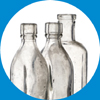
GROUPS OF THINGS. Some things—bottles, buttons, and salt-and-pepper shakers, for example—can sell faster than individual items. Try grouping closely related items, such as a group of old medicine bottles (especially if the labels are intact) or a group of metal military buttons.

SEASONAL DECOR. Holiday decorations, particularly for Christmas, are eternally popular.
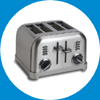
ELECTRONICS. Television sets, VCRs, DVD players, CD players, personal stereos, microwave ovens, toasters and toaster ovens, surge protectors—clean them and be sure they work and they will usually sell. Used computers are much less salable.
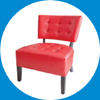
FURNITURE. If clean and unbroken, furniture often moves fast. Clean all upholstery and plump cushions, polish wood, and wipe plastic or vinyl furniture. Desks, bookcases, chairs, side tables, dining tables, patio furniture, chests of drawers—fix them up, and you’ll clear them out.
A tag sale is neither fun nor useful if no one comes to it. You have to go all out and create a crowd to get rid of your stuff and make real money. The trick: Get onto the “go-to” lists of all those regular garage-sale shoppers. Here’s how.
Newspapers. There is a section of the classifieds devoted to yard, garage, and tag sales—and serious shoppers clip them out and go to the sales.
Online. Input “tag sale” (or garage, yard, or rummage sale) and the name of your town and state, and you’ll be amazed how many sites pop up. Choose popular sites, like Craigslist.org, and advertise your sale.
Flyers or small posters. Check local ordinances about putting up posters advertising your sale. If you’re given the go-ahead, cover the notices with clear contact paper to keep them looking good regardless of the weather. Put posters on school or church/synagogue bulletin boards (ask the office first), community boards at stores, laundromats or dry cleaners, and local restaurants. Use bright, fluorescent-colored poster board, and make sure each sign gives complete, easy-to-follow directions to your house. A simple map can help. And finally, a day or two before the sale, put a big, double-sided sign on the most well-traveled street nearest to your house noting the sale, the times, and the address.
Prepare your cash box at least one day before the sale. Depending on the size of your sale, go to the bank and get from $50 to $100 in change: fives, lots of singles, and mixed change. Find a good box with a lock or strong latch to serve as your cash box and set it up the night before the sale. Decide whether or not you will accept checks (most people do, if a sale is large). Be sure checks are made out properly, are from in-state, and get some sort of identification or a local phone number when you accept a check.
As the big day approaches, you need to plan how to display your merchandise. If at all possible, set up tables ahead of time so that, on the morning of the sale, you can simply move them out to wherever the sale will take place. If this isn’t possible, sketch a map of the area you’ll be using, and plan ahead where each piece will go—this will speed up everything on the day of the sale and will prevent you from forgetting things or displaying them poorly in the flurry of the last moment.
Display tables. You will need lots of table space to display your wares. Card tables, folding banquet tables, picnic tables, Ping-Pong, or other game tables—whatever you have can be made to work. If you don’t have tables, make temporary tables by putting flat sheets of plywood or flat doors on top of sawhorses.
Set the stage. Arrange the tables so that people can browse between or around them easily. Bookshelves also work well to display all sorts of items.
Color it up. Inexpensive, brightly colored plastic tablecloths, stapled or taped smoothly over the top surface, are a quick way to make your sale items “pop.”
Look down. Don’t forget the space below the tables when arranging your things. Baskets, large pots, stacks of puzzles or games, luggage, tins, and so on can all be arranged attractively underneath the tables, leaving the tops free for breakable, more valuable, or smaller items. Do not pile things in boxes or other containers—this makes it too hard for a customer to see what you have.
Like to like. As you plan your display, use common sense and logic and what you know of stores to help you figure out the order. One area could be a “Kid Zone” where you display clothes, furniture, toys, games, and so on, all related to children.
High couture. To display clothing, use a clothesline, a dowel between two taller bookcases, or a clothes rack so you can hang the clothes at the right height. Special pieces, such as a wool coat or prom dress, should be hung face out to show them off; other things can be hung as in a closet, separated by gender and size (and season, if appropriate). Again, you can create “sets” to add value: a jacket, scarf, and mittens or a fancy dress with a shawl and clutch purse.
Safe and sound. Valuable or highly breakable items, such as crystal, expensive jewelry, and antiques should be set close to the checkout table and out of the strolling aisles. That way you can keep an eye on them, both to protect them and to prevent them from “walking away.” If you have documentation of an item’s worth (a magazine article, original brochure, eBay listing of similar items), it can be helpful to either add them to the display or have them easily at hand to justify higher prices—and to demonstrate what a bargain the customer is getting.
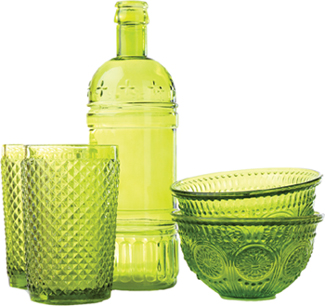
Try and buy. If you’re selling a small appliance or electronics, such as a radio, toaster, or hair dryer, be sure to place them on a table with a power strip, and run a heavy-duty extension cord to power up the strip, so customers can test items on the spot. If you still have the original box and/or the instructions, put them with the device.
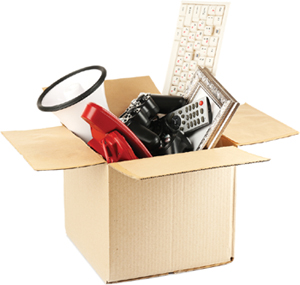
You’ve done all the preparations, cleaned and priced all your merchandise, advertised the sale, and arranged your displays. Now it’s time to get selling!
Ready the site. If you couldn’t do it ahead of time, move all the tables and merchandise into place.
Scout the route. Walk the site to be sure that the flow works, there are no tripping hazards, everything is clean and orderly, and nothing you don’t want to sell is sitting near the displays.
Ample parking. If possible, park your car or cars in a neighbor’s driveway to free up your space. Walk out into the street in front of your house and be sure the display looks attractive to passersby.
You don’t want someone to leave the site because they are thirsty. Set out a cooler jug or bottles of water. If you have a big coffeemaker, set it up with coffee, sugar, and milk or creamer.
A nice atmosphere. Set up a boom box with some festive, but not intrusive, music (Dixieland, pop, chamber music, jazz piano).
Howdy, neighbor! Greet people with a smile and an invitation to take their time looking around. Be available but don’t hover.
Dollar sense. Keep track of the money and the sales.
Assign a cashier. Use extra care when handling money. Someone should always be next to the cash box. Try to have a calculator or adding machine at the checkout table as well.
Supersale? If you have a big sale, have at least two people at the checkout table and others (with name tags or other way of identifying themselves) walking through the sale. If they will be allowed to sell things, consider having them wear cash aprons (canvas tool aprons from a home improvement store work well).
Gauge how the sale is going. If sales are slow and people mention high prices, consider reducing prices by a percentage. For at least the last hour, reduce all prices by 50 percent and let folks know you’ll accept the best offer on anything.